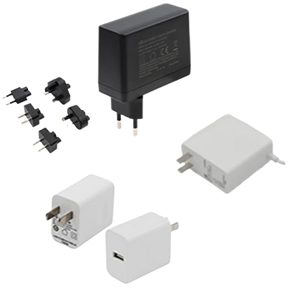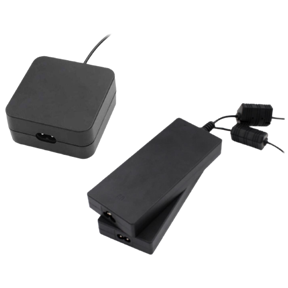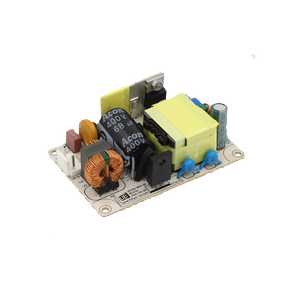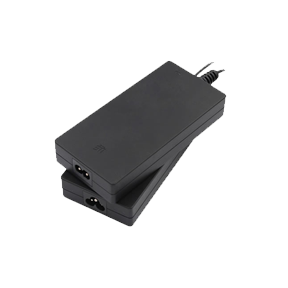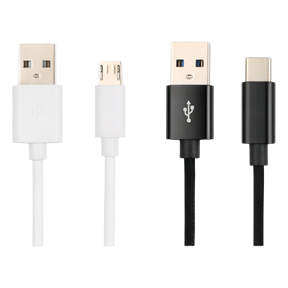POE power supply
PoE refers to a technology that transmits power through network cables. It uses existing Ethernet to simultaneously transmit data and supply power to IP terminal devices (such as: IP phones, APs, IP cameras, etc.) through network cables.
PoE is also known as Power over LAN or Active Ethernet, sometimes referred to as Power over Ethernet.
In order to standardize and promote the development of PoE power supply technology and solve the compatibility problems between power supply and receiving equipment of different manufacturers, the IEEE Standards Committee has issued three PoE standards: IEEE 802.3af standard, IEEE 802.3at standard, IEEE 802.3bt standard.
With the increasing popularity of IP phones, network video surveillance and wireless Ethernet devices in the network, the requirement to provide power support through Ethernet itself is becoming more and more urgent. In most cases, terminal equipment needs DC power supply, and terminal equipment is usually installed on the ceiling or outdoors relatively high from the ground, and it is difficult to have a suitable power socket nearby. Even if there is a socket, it is difficult to find a place for the AC-DC converter required by the terminal equipment placement. In addition, in many large-scale LAN applications, administrators need to manage multiple terminal devices at the same time. These devices require unified power supply and unified management. Due to the limitation of power supply location, it brings great inconvenience to power supply management. Power over Ethernet PoE just solves this problem.
PoE is a wired Ethernet power supply technology. The network cable used for data transmission also has the capability of DC power supply, effectively solving the centralized power supply of IP phones, wireless APs, portable device chargers, card readers, cameras, data acquisition and other terminals. . PoE power supply has the advantages of reliability, simple connection and unified standard:
·Reliable: One PoE device can supply power to multiple terminal devices at the same time, realizing centralized power supply and power backup at the same time.
·Easy connection: Terminal equipment does not need an external power supply, only a network cable is needed.
·Standard: It complies with international standards and uses the globally unified RJ45 power interface, which can ensure the docking with equipment from different manufacturers.
As shown in the figure below, the PoE power supply system includes the following two device roles:
·Power-sourcing equipment PSE (Power-sourcing Equipment): A PoE device that supplies power to the powered device through Ethernet, providing functions such as detection, analysis, and intelligent power management, such as a PoE switch.
·PD (Powered Device): Such as wireless AP, portable device charger, credit card machine, camera and other powered devices. PDs are classified into standard PDs and non-standard PDs according to whether they comply with IEEE standards.
According to the definition of the IEEE standard, PSE devices are divided into two types: MidSpan (PoE function module is outside the device) and Endpoint (PoE function module is integrated into the device). The PoE functional modules of Huawei Cloudengine S series PoE switches are all integrated inside the device, which belongs to the Endpoint PSE device.
Endpoint PSE devices are divided into two power supply modes: Alternative A (1/2 and 3/6 wire pairs) and Alternative B (4/5 and 7/8 wire pairs) according to the power supply wire pairs used.
Alternative A power supply mode supplies power through the data pair. The PSE supplies power to the PD through the 1/2 and 3/6 wire pairs, the 1/2 connection forms the negative pole, and the 3/6 connection forms the positive pole. 10BASE-T and 100BASE-TX interfaces use 1/2 and 3/6 wire pairs to transmit data, and 1000BASE-T interfaces use all 4 wire pairs to transmit data. Since DC direct current and data frequency do not interfere with each other, current and data can be transmitted simultaneously on the same pair of wires.
Alternative B power mode supplies power through the idle pair. The PSE supplies power to the PD through the 4/5 and 7/8 wire pairs, the 4/5 connection forms the positive pole, and the 7/8 connection forms the negative pole.
The IEEE standard does not allow the above two power supply modes to be applied at the same time. The power supply equipment PSE can only provide one usage, but the powered equipment PD must be able to adapt to both situations at the same time.
After the PSE is powered on and the PD is connected to the PSE through the network, the PSE and the PD start power supply negotiation:
1. Detection of PD: PSE periodically outputs a small voltage with limited current on the port to detect the existence of PD equipment. If a resistor with a specific resistance value is detected, it means that the terminal of the cable is connected to a power receiving device that supports the IEEE 802.3af standard or the IEEE 802.3at standard (a specific resistor with a resistance value of 19kΩ~26.5kΩ, and the usual small voltage is 2.7V~ 10.1V, the detection period is 2 seconds).
2. Power supply capability negotiation is the process of classifying PD equipment: PSE classifies PDs and negotiates power supply power. Power supply capability negotiation can be achieved not only by analyzing the resistance sent by the PSE and PD, but also by link layer discovery protocol LLDP (Link Layer Discovery Protocol) protocol to discover and advertise the power supply capability for negotiation.
3. Start power supply: During the startup period (generally less than 15μs), the PSE device starts to supply power to the PD device from a low voltage until it provides a DC voltage of 48V.
4. Normal power supply: After the voltage reaches 48V, the PSE provides a stable and reliable 48V DC power for the PD device, and the power consumption of the PD device does not exceed the maximum output power of the PSE.
5. Power failure: During the power supply process, the PSE will continuously monitor the PD current input. When the PD current consumption drops below the minimum value, or the current surges, such as unplugging the device or encountering a PD device power consumption overload, short circuit, or exceeding the power supply of the PSE load, etc., the PSE will disconnect the power supply and repeat the detection process.
We mentioned earlier that the IEEE Standards Committee has issued three PoE standards to solve the compatibility problem between power supply and receiving equipment of different manufacturers: IEEE 802.3af standard, IEEE 802.3at standard, IEEE 802.3bt standard. So what is the difference between these three standards?
In June 2003, the IEEE 802.3 working group formulated the IEEE 802.3af standard. As an extension of the Ethernet standard, it made detailed regulations on the power supply, transmission and reception of network power supply. For example: The IEEE 802.3af standard stipulates that PSE devices need to provide up to 15.4W of DC power on each port.
Due to some power dissipation in the cable, only 12.95W is available to the powered device. In October 2009, the IEEE 802.3at standard was born to meet the needs of high-power terminals. On the basis of being compatible with the 802.3af standard, the IEEE 802.3at standard provides a maximum power of 25.5W to meet new requirements.
In September 2018, in order to further improve the PoE power supply and optimize the standard, the IEEE Standards Committee released the IEEE 802.3bt standard. The IEEE 802.3bt standard further improves the power supply capability. Type 3 can provide up to 51 W of power supply, and Type 4 can provide up to 71.3W of power supply. Additionally, support for 2.5GBASE-T, 5GBASE-T and 10GBASE-T is included, expanding the use of applications such as high-performance wireless access points and surveillance cameras.
Generally, the power supply technology corresponding to the IEEE 802.3af standard is called PoE power supply, the power supply technology corresponding to the IEEE 802.3at standard is called PoE+ power supply, and the power supply technology corresponding to the IEEE 802.3bt standard is called PoE++ power supply, also known as 4PPoE. The corresponding parameters of the three power supply technologies are shown in the figure below.

